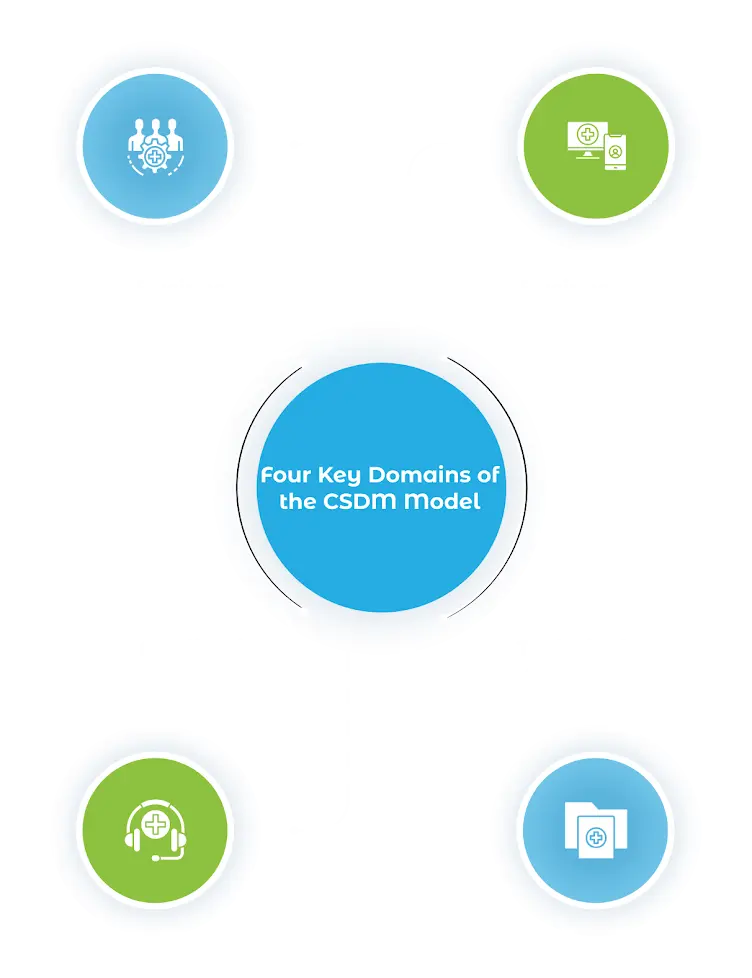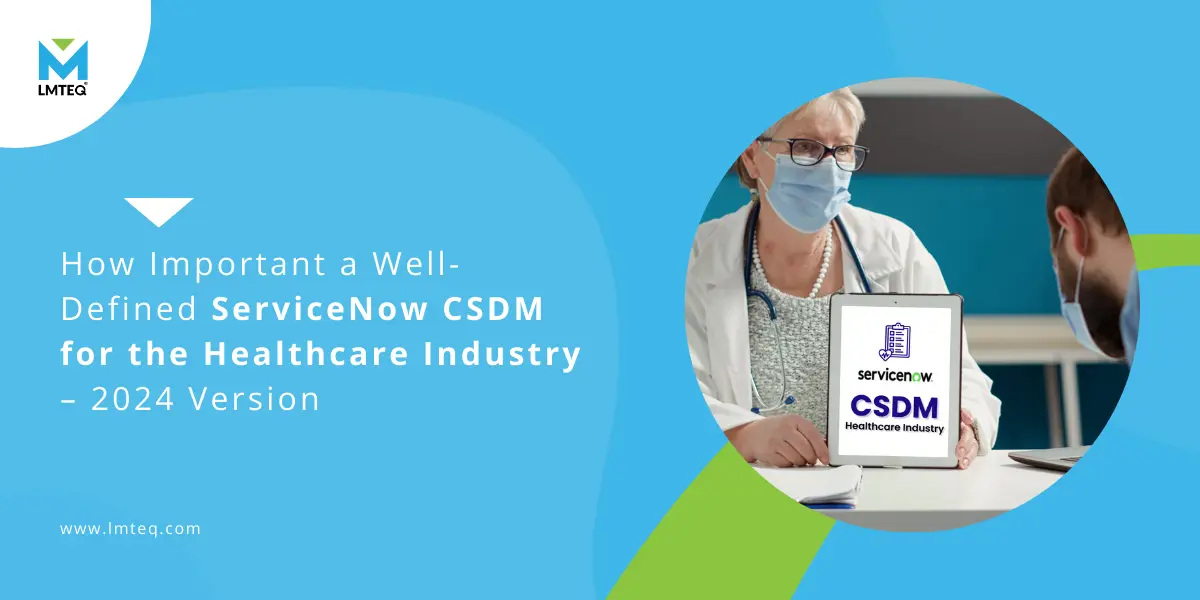“In healthcare, every second counts. Don’t let service disruptions stand between your patients and the care they need—learn how a solid ServiceNow CSDM framework can keep your systems running smoothly.”
Healthcare today faces numerous challenges. From managing complex clinical devices to ensuring critical systems like emergency services and electronic health records (EHRs) remain operational, service disruptions can lead to life-threatening situations.
In 2022, the World Health Organization (WHO) reported significant global service disruptions, highlighting the urgency for reliable and efficient IT infrastructure in healthcare. These disruptions aren’t just inconveniences—they can have serious impacts on patient care and outcomes.
To overcome these challenges, healthcare providers need a structured framework that enables them to maintain operational continuity, even during unforeseen events. This is where the ServiceNow Common Service Data Model (CSDM) comes into play.
In this blog, we’ll explore what CSDM is, how to implement it effectively in the healthcare industry, and why having a robust CSDM model is important for reducing service disruptions and delivering consistent, high-quality care.
Jump to any section if required : -
What is the CSDM Framework Model?
The common service data model, aka CSDM, is a framework or a blueprint that helps organizations manage all their services, operations and IT infrastructure in one place. What it does is, it clearly defines how information should be handled across the organization.
In much simpler terms, CSDM is a map that helps you understand which services are running, what systems support them, and how everything is connected.
By using the CSDM model, businesses can quickly see how their IT systems support critical functions, like customer service or patient care in healthcare, making it easier to prevent or fix issues.
The CSDM model is the backbone of effective service management, asset management, and configuration management in ServiceNow.
The Four Key Domains of the CSDM Model

It is known that the CSDM is a framework that helps businesses align their IT services with their objectives.
The approach depends on four core domains, and the breakdown is as follows:
1. Business Capabilities
- This domain represents what your organization does at a high level, like delivering patient care, managing customer relationships, or processing payments.
- Example – In healthcare, business capabilities could include patient management, billing, or clinical services.
2. Business Applications
- These are the software or applications that support the business capabilities. They enable your organization to perform specific tasks or provide services.
- Example – For healthcare, business applications might include EHR systems (Electronic Health Records) or telehealth platforms.
3. Application Services
- Application services refer to how the business applications are delivered and managed. It connects the technical side (apps and infrastructure) to business outcomes.
- Example – An application service could be the support service for maintaining and updating the EHR system, ensuring it runs without interruptions.
4. Technical Services
- These are the underlying IT systems and infrastructure that support the delivery of application services. It includes things like databases, servers, cloud infrastructure, and network services.
- Examples – Cloud storage for medical records, network services for telemedicine, or server management for running healthcare apps.
Why It is Important to Have a Solid ServiceNow CSDM Model?
1. Efficient Management of EHR Systems
- Technical Reason – EHR systems are essential for managing patient data, medical histories, and treatment plans. These systems require robust IT infrastructure for real-time access and secure data handling.
- CSDM’s Role – By mapping EHR systems to their underlying infrastructure, CSDM helps track all configurations, dependencies, and associated services, ensuring high availability and minimizing the risk of downtime. This mapping allows for proactive monitoring and rapid troubleshooting, especially during maintenance, updates, or failures.
2. Clinical Device Management
- Technical Reason – Clinical devices such as MRI machines, ventilators, and other critical equipment are interconnected with hospital networks, requiring continuous monitoring and preventive maintenance.
- CSDM’s Role – CSDM enables healthcare organizations to treat clinical devices as Configuration Items (CIs) within ServiceNow CMDB, allowing for comprehensive tracking of device status, performance, and integration with healthcare applications. The model helps in scheduling preventive maintenance, thus reducing unplanned outages and ensuring devices are available when needed most.
3. Service Reliability for Emergency Systems
- Technical Reason – Systems like ambulance dispatch, emergency room management, and critical care monitoring rely on uninterrupted IT services. Any disruption in these systems can delay emergency response times and compromise patient safety.
- CSDM’s Role – CSDM provides a detailed overview of how emergency services are supported by IT infrastructure, such as servers, networks, and databases. Mapping the entire service ecosystem helps IT teams quickly identify potential points of failure, ensuring that emergency services remain operational around the clock.
4. Improved Incident and Problem Management
- Technical Reason – In healthcare, IT incidents or service disruptions can have severe consequences, including delays in patient care or medication administration.
- CSDM’s Role – A solid CSDM model ensures that all healthcare services and systems are mapped to their dependencies, enabling more efficient incident management and faster root-cause analysis. When an issue arises, IT teams can trace it back to its source (e.g., a network failure affecting EHR access), reducing mean time to resolution (MTTR) and ensuring minimal service disruption.
5. Data Integration Across Healthcare Applications
- Technical Reason – Healthcare environments often include a wide range of applications, from EHR systems to billing software and laboratory management systems. Integrating these systems is crucial for a seamless flow of data.
- CSDM’s Role – CSDM maps the relationships between different healthcare applications and their supporting infrastructure, enabling data integration and ensuring that applications work together efficiently. This supports smooth transitions between systems, such as from patient intake to billing or from diagnostics to treatment planning.
6. Ensuring Compliance with Healthcare Regulations
- Technical Reason – Healthcare providers must comply with regulations such as HIPAA (Health Insurance Portability and Accountability Act) to protect sensitive patient information.
- CSDM’s Role – By providing a clear and organized data model, CSDM helps track how healthcare services and applications handle patient data, ensuring that all systems meet data privacy and security requirements. This mapping enables healthcare organizations to easily audit their IT systems for compliance and address gaps in security or data management practices.
7. Optimizing IT Operations and Cost Management
- Technical Reason – The healthcare industry often faces high operational costs, especially when maintaining and upgrading IT infrastructure for critical services.
- CSDM’s Role – With CSDM, IT teams can optimize resource allocation by gaining full visibility into the relationship between IT infrastructure and healthcare services. This allows for more efficient use of resources, avoiding unnecessary duplication of services or infrastructure. Additionally, cost management becomes more streamlined, as IT operations can focus on maintaining only the most critical assets and services.
8. Support for Cloud and Hybrid IT Infrastructures
- Technical Reason – Many healthcare organizations are transitioning to cloud or hybrid infrastructures to manage patient data and critical applications more effectively.
- CSDM’s Role – CSDM provides a unified view of both on-premises and cloud-based services, helping IT teams manage the transition and ensure that cloud services (such as those for data storage or telemedicine) integrate seamlessly with existing healthcare systems. This hybrid visibility ensures that all services are accounted for, preventing gaps in service coverage.
9. Proactive Monitoring and Predictive Maintenance
- Technical Reason – Proactive monitoring and predictive maintenance are essential for healthcare organizations to avoid downtime in critical systems.
- CSDM’s Role – CSDM enables healthcare organizations to set up automated monitoring and alerts for critical services and devices. By leveraging ServiceNow’s IT Operations Management (ITOM), healthcare providers can predict potential failures (e.g., a clinical device nearing its maintenance threshold) and resolve issues before they impact operations.
ServiceNow CSDM for Efficient Patient Management
Managing patient data efficiently is at the heart of delivering great care, whether it’s for in-patients or out-patients. A well-defined CSDM model ensures that key patient information—like admissions, discharges, and treatments—remains accurate and easily accessible.
For in-patients, having real-time updates on bed availability, treatment progress, and medical equipment is essential to avoid delays and keep everything running smoothly. Out-patients depend on timely appointment scheduling, follow-ups, and treatment histories to maintain the continuity of their care.
With ServiceNow CSDM, healthcare providers can:
- Seamlessly connect patient records with IT systems for better data flow.
- Ensure care is delivered on time by providing real-time visibility into available resources.
- Simplify operations by linking patient information directly to clinical services.
How is ServiceNow CSDM Related to Configuration Management Database (CMDB)?
| Major Relationship | CSDM | Configuration Management Database (CMDB) |
|---|---|---|
| CSDM is a framework whereas CMDB is a database. | It provides the guidelines, best practices, and standardized models for how data should be organized in the CMDB. It defines what types of Configuration Items (CIs) should exist and how they should be related to each other. | The actual database where the CIs are stored. It contains information about all IT assets (e.g., servers, applications, devices) and their relationships within the organization. |
| CSDM defines data structure whereas CMDB holds the data. | Structures the CMDB by specifying how different services, applications, and infrastructure should be categorized and related. It ensures that the data is consistent, organized, and aligned with business services. | Is the repository where all the information about IT systems, services, and their dependencies is stored. The CMDB becomes more effective and usable when structured according to CSDM guidelines. |
| Good Consistency. | Introduces a consistent and standardized way to map services and infrastructure in the CMDB. This consistency allows organizations to better manage and monitor their IT environment, making the CMDB a more valuable tool for IT operations. | Without CSDM, the CMDB may lack structure, making it harder to understand the relationships between different services, applications, and assets. |
| Better IT Service Management. | Ensures that services and their underlying technology are correctly mapped, which improves the accuracy and reliability of the CMDB. This is crucial for effective Incident, Problem, and Change Management in ServiceNow. | Supports IT Service Management by providing accurate data about the CIs and their relationships, but CSDM ensures that the data is organized in a way that aligns with business services. |
How to Implement a Robust ServiceNow CSDM for Health Care Industry
Implementation of ServiceNow CSDM warrants ServiceNow expertise and industry knowledge to understand the requirements. It is advised to leverage the global ServiceNow implementation service provider for the best result.
There are four to five phases (depending on the requirements) typically involved in implementing a sophisticated ServiceNow CSDM.
1. Foundation Phase
Objective – Build a solid groundwork for accurate reporting and data management.
- Define key terms and categorize healthcare-specific data elements in the CMDB, such as clinical devices, EHR systems, and emergency services.
- Set up a reliable data foundation, including critical IT services and their relationships to healthcare operations like patient record management, device uptime, and emergency dispatch systems.
- Ensure this data foundation meets regulatory requirements like HIPAA for data privacy and security.
2. Crawl Phase
- Establish basic data structures to support incident management for services like ambulance dispatch systems or clinical device failures.
- Create a minimum setup for tracking incidents, problems, and change management for healthcare applications and systems, such as pharmacy management software or lab testing devices.
- Integrate change management workflows to minimize disruptions in healthcare systems during maintenance or upgrades.
3. Walk Phase
Objective – Enhance infrastructure management and provide support for deployed systems.
- Strengthen management capabilities for healthcare infrastructure, such as data centers that support critical systems like EHR, telemedicine, and clinical devices.
- Address infrastructure management challenges to ensure the high availability of essential healthcare services.
- Implement predictive maintenance for critical clinical devices, reducing unexpected downtime.
4. Run Phase
- Focus on integrating business services like hospital patient workflows, medical billing, and pharmacy management systems with the essential IT infrastructure.
- Gain deeper insights into how technology supports emergency medical services, patient data access, and other operational needs.
- Use these insights to improve service reliability, ensuring faster response times in emergency services and maintaining uptime for clinical workflows.
5. Fly Phase
- Fully align healthcare technology (e.g., EHR systems, medical devices, emergency services) with business services for optimized care delivery.
- Complete any remaining CSDM components to streamline patient management and clinical device usage, ensuring a seamless flow of operations.
- Outcomes include improved healthcare service quality, faster response times in emergencies, and reduced operational costs due to better technology alignment.
Key Takeaway – A Well-Defined CSDM is the Backbone of Efficient Healthcare IT Operations
In the demanding world of healthcare, every minute counts, and smooth operations are crucial for patient care. A well-implemented ServiceNow CSDM model helps ensure that your critical systems, from clinical devices to emergency services, run seamlessly and without interruptions. By aligning your IT services with your healthcare goals, you can enhance service reliability, keep operations running smoothly, and ultimately provide better care for your patients.
LMTEQ is here to support your journey with our expert ServiceNow implementation services, helping you create a strong foundation for your IT operations and ensuring your healthcare systems work as they should.
Frequently Asked Questions
1. What are the 5 CSDM domains in ServiceNow?
- Foundation Data.
- Business Applications.
- Technical Services.
- Business Services.
- Operational Data.

